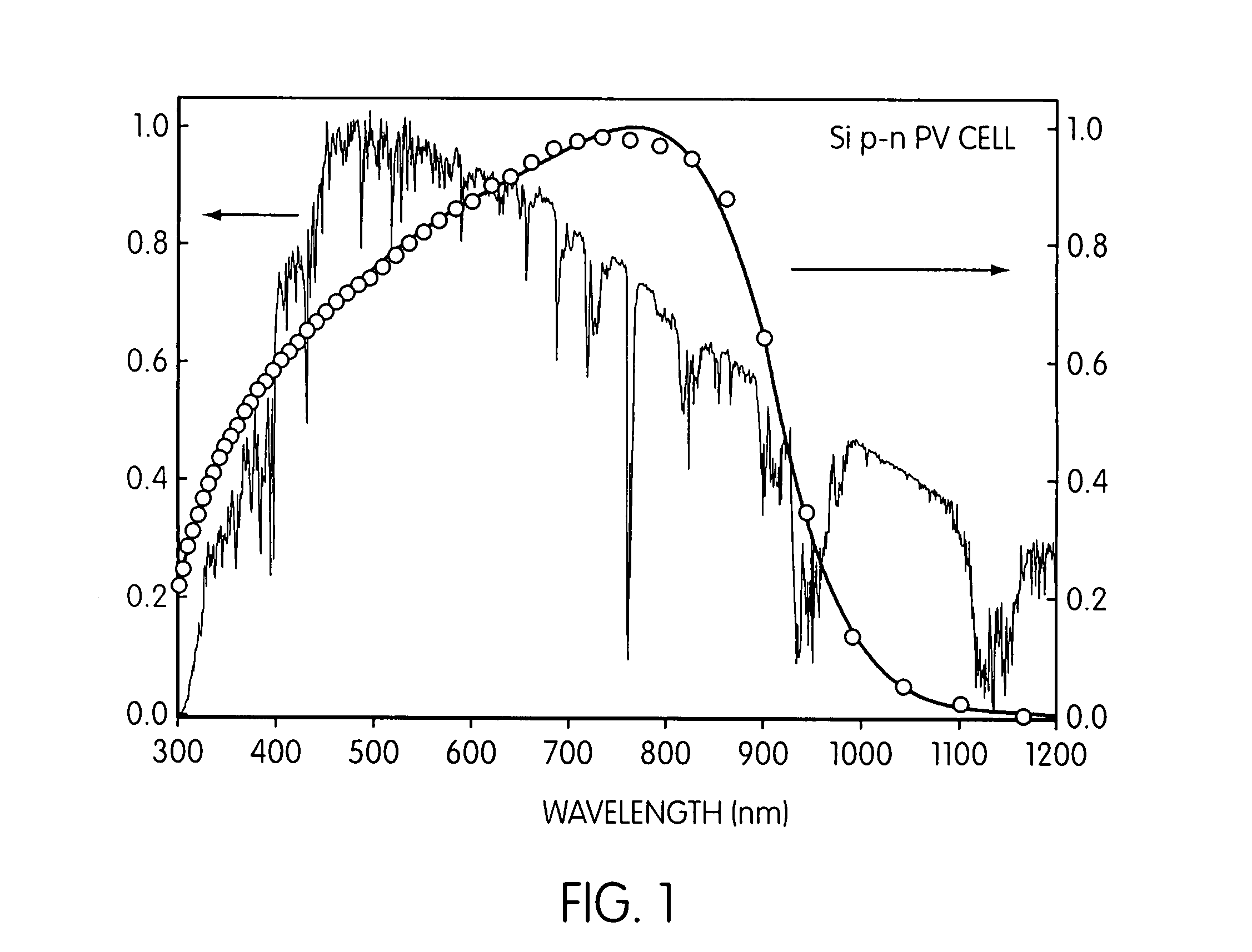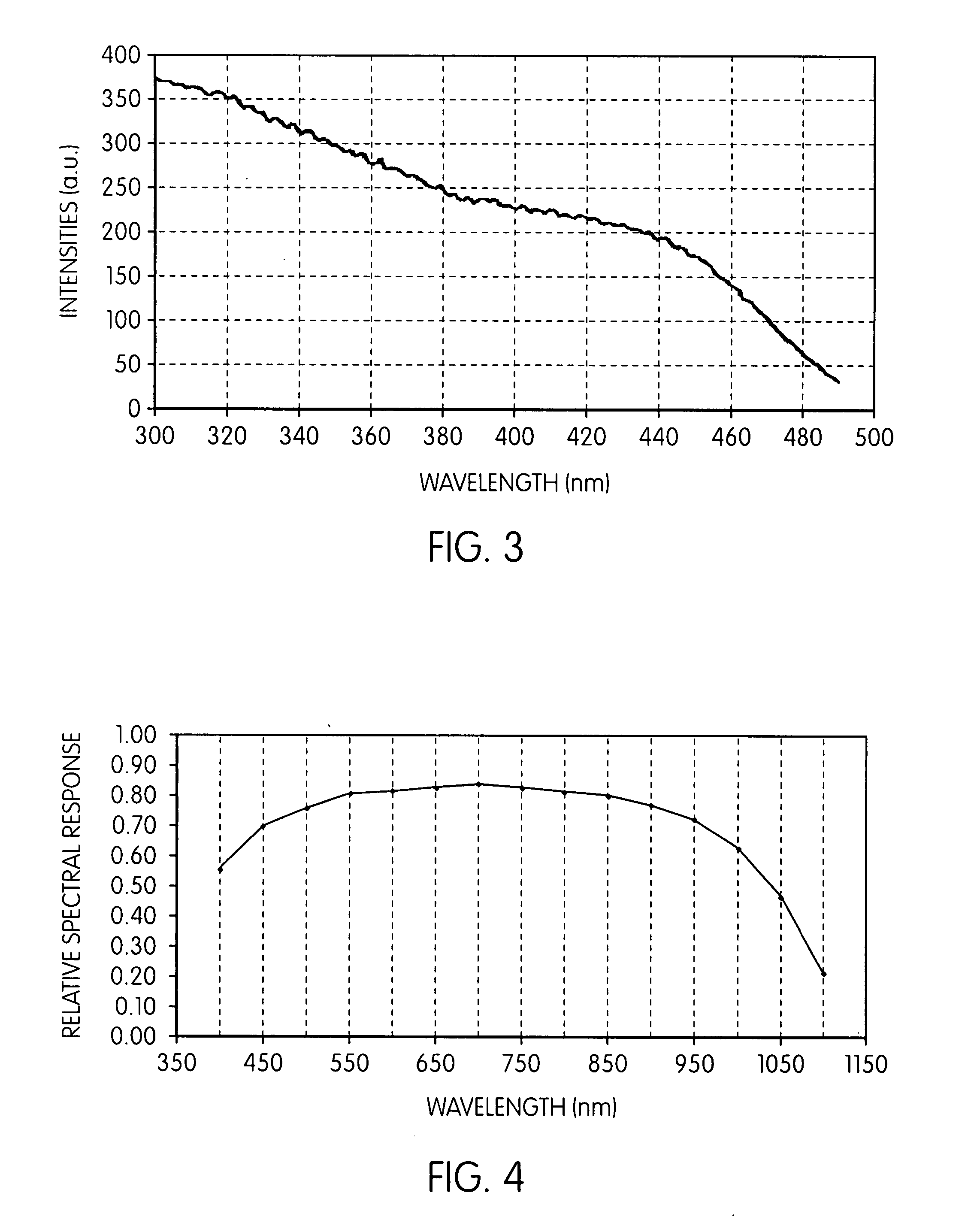Wavelength-converting phosphors for enhancing the efficiency of a photovoltaic device
a photovoltaic device and wavelength conversion technology, applied in the field of wavelength conversion phosphors, can solve the problems of short wavelength, inefficiency of solar cells and/or photovoltaic devices, and inability to achieve the effect of reducing scattering losses
- Summary
- Abstract
- Description
- Claims
- Application Information
AI Technical Summary
Benefits of technology
Problems solved by technology
Method used
Image
Examples
Embodiment Construction
[0022] Embodiments of the present invention are directed in general to the field of photovoltaic (PV) technologies that convert solar energy directly into electrical energy. More specifically, the field of the invention is directed to a phosphor-based wavelength-shifter (also known as wavelength-converter) that may be incorporated with, or placed on or adjacent to a photovoltaic cell for reshaping the spectral distribution of the photon flux incident to the solar cell. The enhanced match between the incident photon flux and the spectral response of the photovoltaic cell increases the output power of the solar device. Especially provided by the present embodiments are wavelength-converters comprising nano-particles of phosphor, where the nano-particles may be embedded in a transparent matrix.
[0023] The vast majority of solar panels today are made of silicon single-junction solar cells. These devices are called first generation, and highly stable solar cells. Unfortunately, it is inh...
PUM
 Login to View More
Login to View More Abstract
Description
Claims
Application Information
 Login to View More
Login to View More - R&D
- Intellectual Property
- Life Sciences
- Materials
- Tech Scout
- Unparalleled Data Quality
- Higher Quality Content
- 60% Fewer Hallucinations
Browse by: Latest US Patents, China's latest patents, Technical Efficacy Thesaurus, Application Domain, Technology Topic, Popular Technical Reports.
© 2025 PatSnap. All rights reserved.Legal|Privacy policy|Modern Slavery Act Transparency Statement|Sitemap|About US| Contact US: help@patsnap.com



